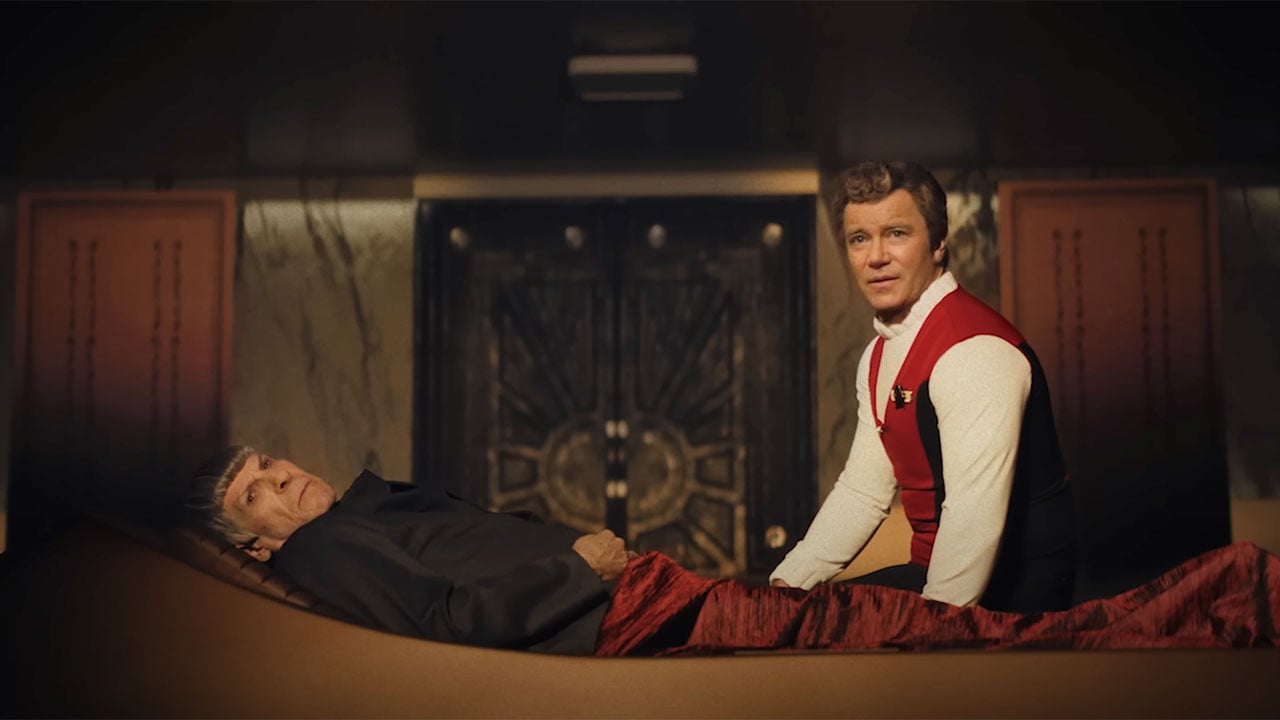
At a sprightly 93, William Shatner might not be taking on any new action roles, but it hasn't stopped him returning to the role of Captain Kirk in 765874 Unification.
The question of whether an actor can continue performing younger roles well into old age, or even beyond, has been a question that has been asked by many a filmmaker and actor. In the past, we've seen many attempts at bringing long passed actors back to life, with, err, varying degrees of success.
One of the original "deepfakes", and a production that really did bring the conversation about bringing actors back from the dead to the fore, was Ford's 1997 commercial for its Puma car. The ad, which used CGI to place Steve McQueen in the driving seat of the car to the theme from Bullit, has often been judged to be one of the best car commercials ever produced.
More recently, we've seen a 'young' Robert De Niro in 2019's The Irishman, which used a CGI-based de-ageing process with varying degrees of success.
As anyone who has watched any of the attempts to either de-age or bring back actors from the dead will attest, the results can be extremely mixed in terms of quality. We've had the generally 'pretty good', such as the opening scene from Terminator Genisys, which recreated a sequence from the first film in 1984 using a 'young' Arnie. Although it could be argued that animating an emotionless robot is a pretty easy task from a CGI perspective! We've had the downright terrible, such as the cartoon like recreation of Peter Cushing in the Star Wars prequels. Although I suppose, it was at least a step up from the cardboard cutout of Bruce Lee's face that was seen in the attempt to continue filming Game of Death after his passing...
The trouble with most CGI recreations of bygone actors we know and love, is that things usually always cross the uncanny valley at some point. It could be the most minor facial or eye movement, or even something that we just simply can't put our finger on. Either way, generally the results we have seen so far are very good or very, very bad.
765874 Unification
Which brings me onto the new release of the not so catchily titled 765874 Unification. It sounds very much like the kind of title that the BBC might have given one of its cheaply produced science fiction series in the 1970s, but thankfully instead it represents a very clever new short film set in the Star Trek universe.
765874 Unification features a story written by Jules Urbach and directed by Carlos Baena, and is set just after the events of Star Trek: Generations, which celebrates its 30th anniversary this year. The 8-minute short has been produced by OTOY in association with William Shatner and the Nimoy Estate, and it sees the return of Captain Kirk, Spock, and numerous other characters to the screen for one last time.
The production has been made for the Roddenberry Archive as part of a set of new interactive sets, documentary interviews and BTS videos to mark the anniversary of the film.
Unification is notable for two main reasons. The first and most obvious one, is that it features the recreation and reunification (hence the title) of Star Trek's most famous characters. The second, is that it has been made with the Apple Vision Pro as its primary intended viewing experience.
The short film used actors Sam Witwer and Lawrence Selleck as Kirk and Spock respectively. They performed as the famous characters in real locations, aided by a combination of digital and physical prosthetics that would eventually bring Trek's most iconic characters back to life. The real sets were augmented with CGI set extensions, as well as being 3D scanned for inclusion into The Archive's database of sets and worlds.
Characters were digitised using OTOY's Lightstage software, while visual effects were taken care of with Octane, under a team lead by Mark Spatny. The results are uncannily good, with only very rare "uncanny valley" moments. Unification would appear to represent the best example yet of de-ageing an actor as well as bringing back deceased ones such as Leonard Nimoy.
765874 Unification is a very good case study for showing how one day it might be possible for an entirely new feature film to be made with old characters, without CGI sticking out like a sore thumb. But, it also raises the question of why we need to keep resurrecting deceased actors instead of allowing new ones to flourish and establish their own legend?
Let us know what you think below, and whatever your thoughts on the matter, enjoy watching the film. Users with standard devices can watch the YouTube link below, while Vision Pro owners can watch the film using The Archive app.
tl;dr
- The use of CGI to recreate actors, like Steve McQueen in Ford's 1997 commercial, has sparked debates about the effectiveness and ethics of bringing deceased actors back to life for new roles.
- The short film 765874 Unification features a reunion of iconic Star Trek characters, with advanced visual techniques that minimize the "uncanny valley" effect typically associated with CGI recreations.
- Directed by Carlos Baena and produced by OTOY in collaboration with William Shatner and the Nimoy Estate, the film utilizes real locations enhanced with CGI, showcasing significant advancements in de-aging technology.
- While 765874 Unification demonstrates the potential for successful CGI recreations, it raises questions about the future of acting and whether we should prioritize newer talents over resurrecting beloved but deceased performers.
Tags: Technology Production CGI


Comments